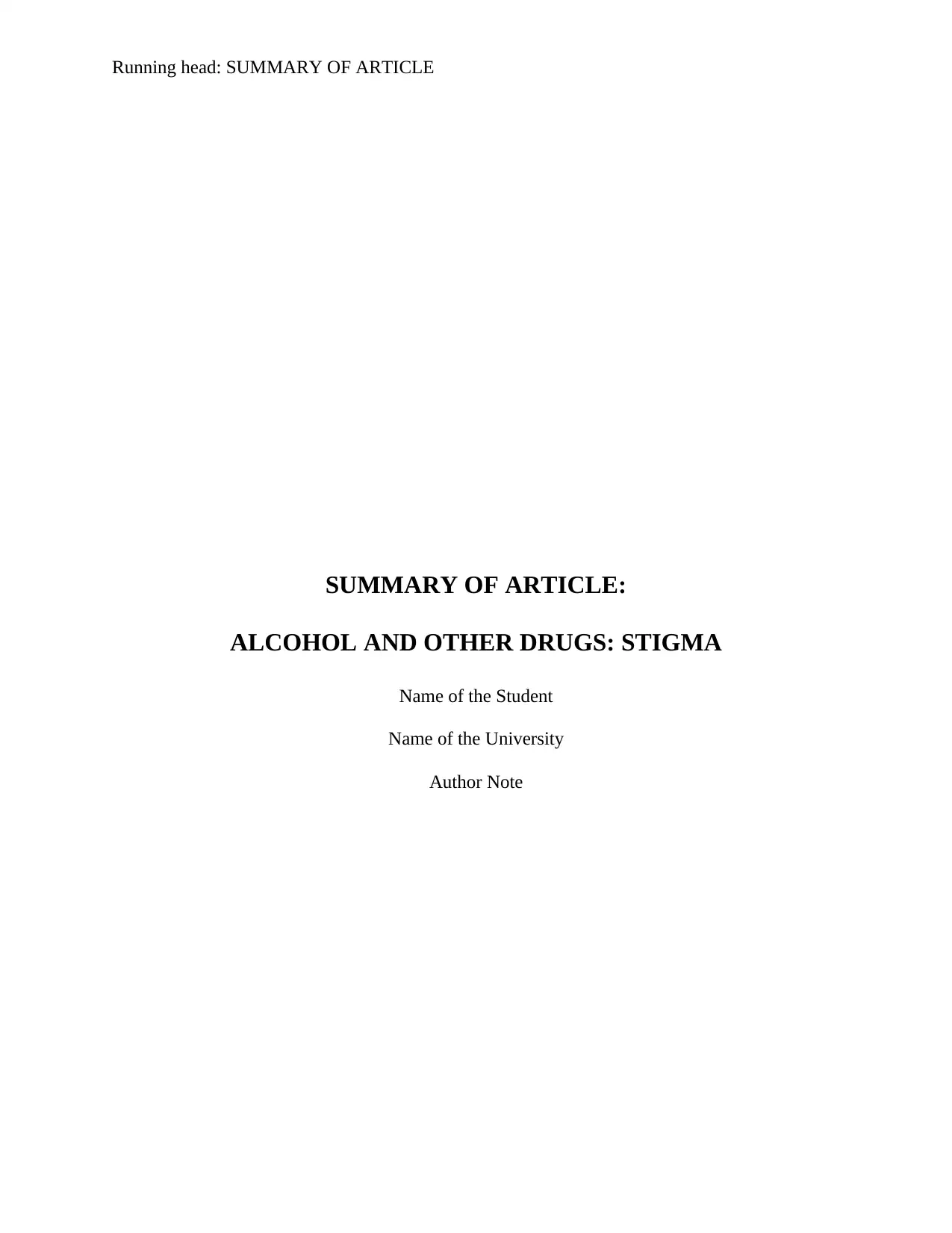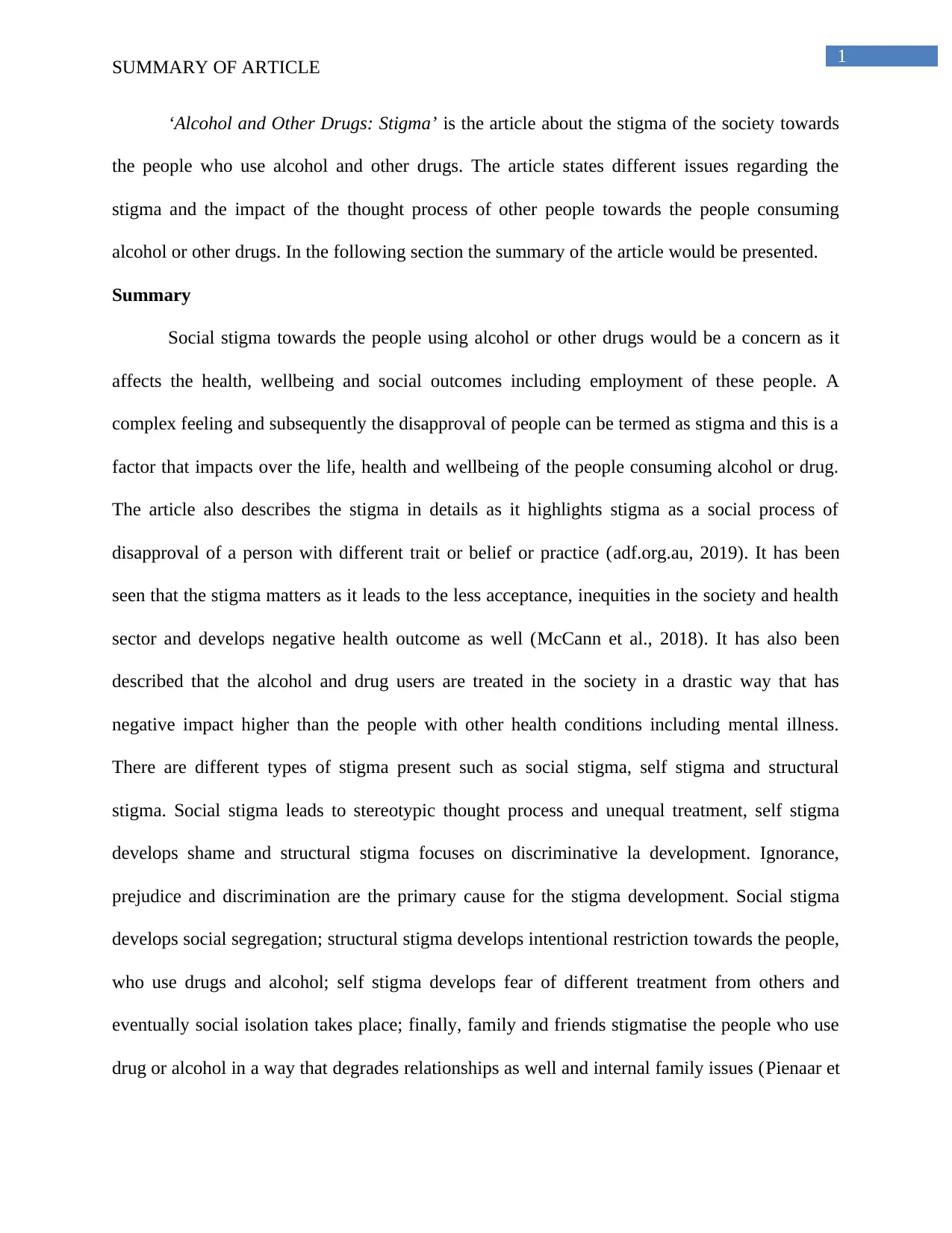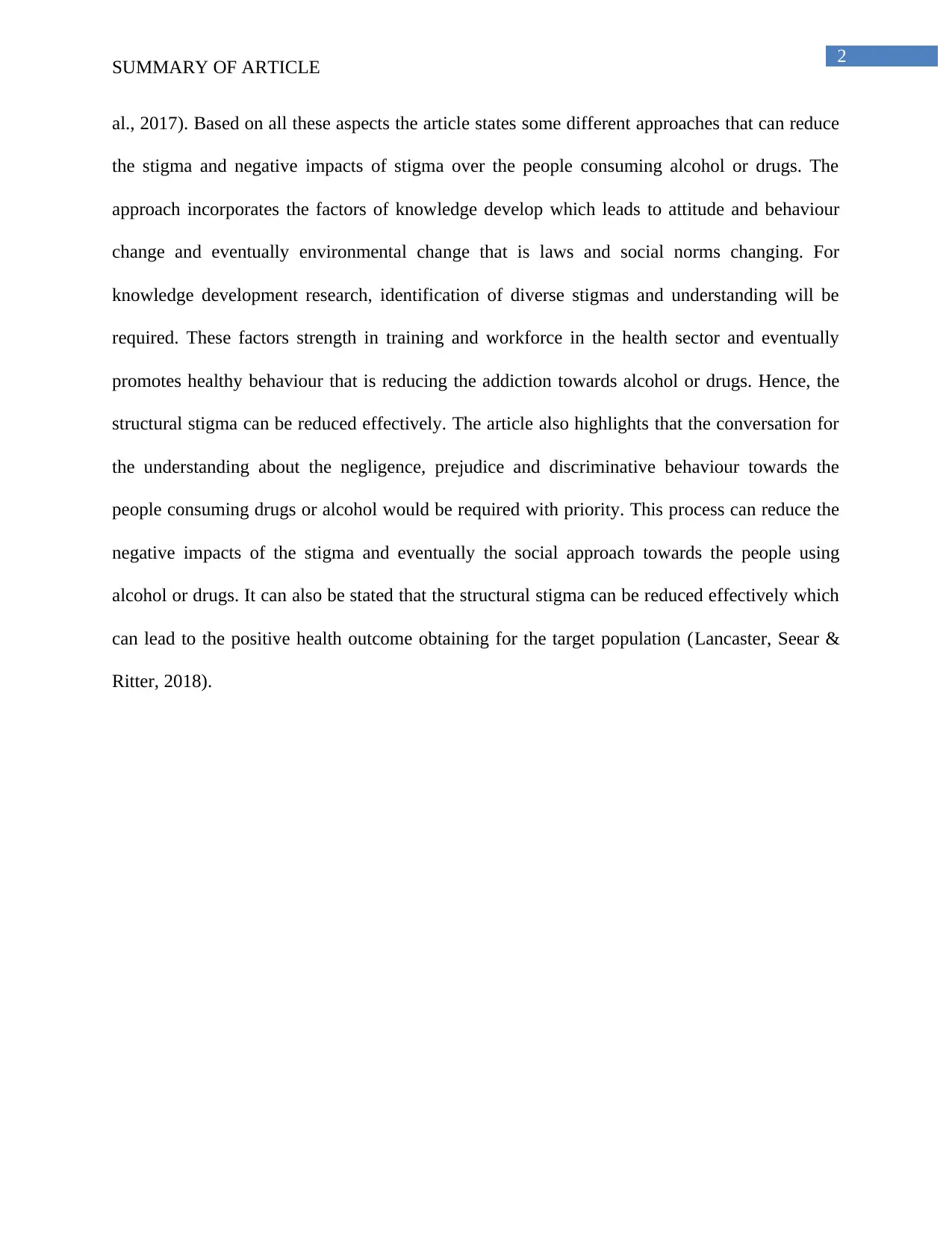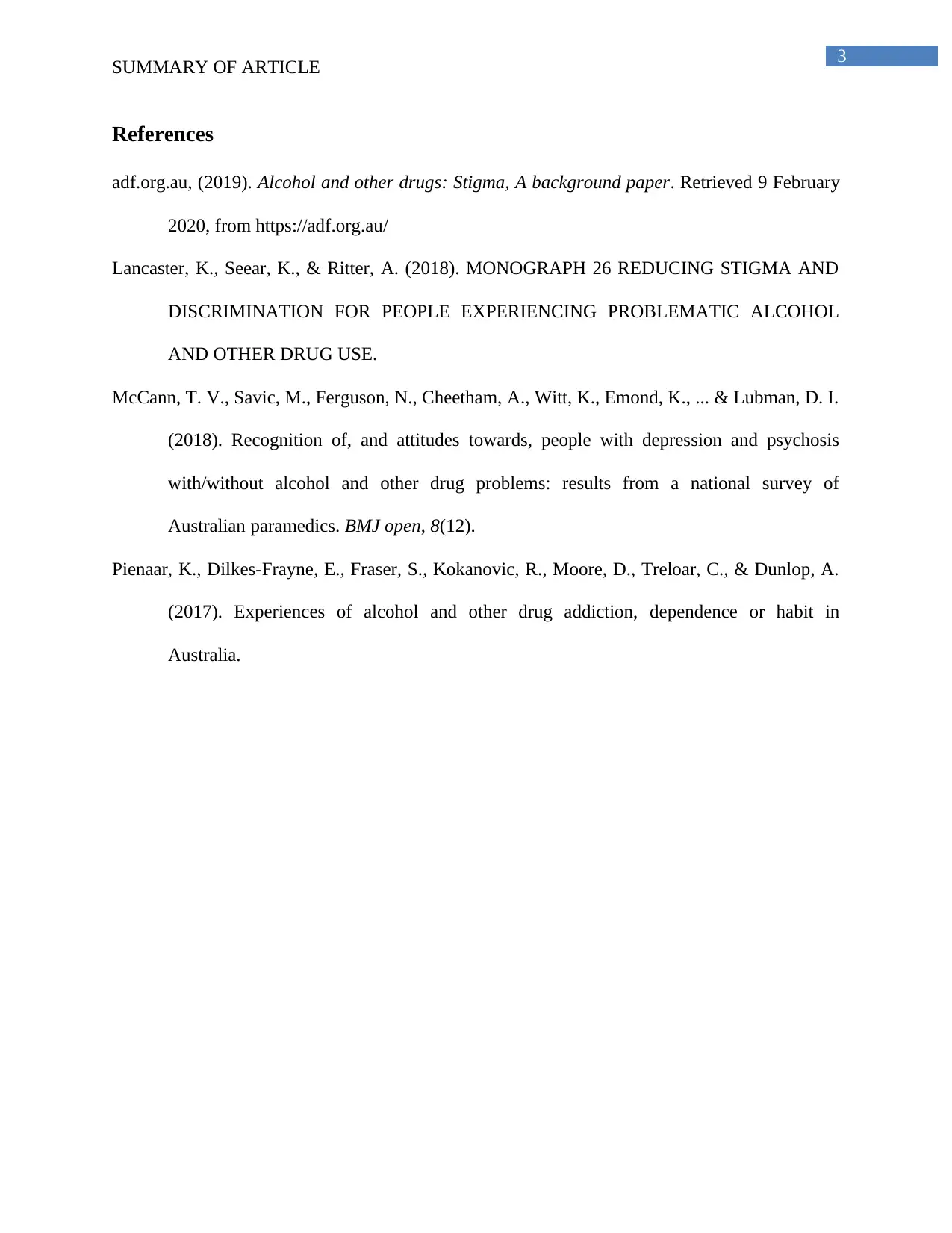Analysis and Summary: Alcohol and Drug Stigma Article Report
VerifiedAdded on 2022/08/14
|4
|775
|16
Report
AI Summary
This report provides a comprehensive summary of an article titled 'Alcohol and Other Drugs: Stigma,' which examines the societal stigma associated with alcohol and drug use. The article highlights the negative impacts of stigma on individuals' health, wellbeing, employment, and social outcomes, emphasizing that stigma is a complex social phenomenon leading to disapproval and discrimination. It details various types of stigma, including social, self, and structural stigma, and discusses their causes and consequences, such as social segregation and self-isolation. The report also outlines potential approaches to reduce stigma, focusing on knowledge development, attitude and behavior change, and environmental changes through laws and social norms. It underscores the importance of open conversations and understanding to mitigate the negative effects of stigma and improve social attitudes towards individuals using alcohol or drugs, ultimately aiming for positive health outcomes.
1 out of 4











![[object Object]](/_next/static/media/star-bottom.7253800d.svg)